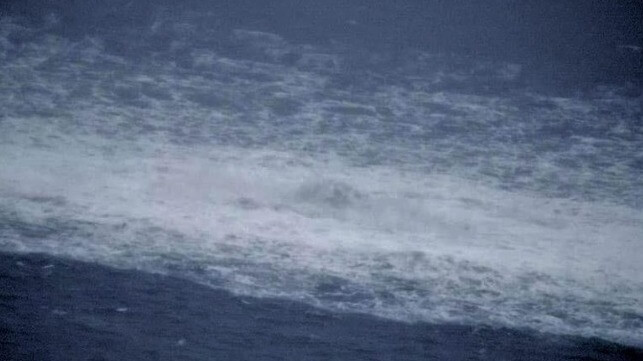Sweden Begins "Crime Scene Investigation" Into Nord Stream Leaks

Sweden's Prosecution Authority has ordered a cordon area around the Nord Stream pipeline leaks "to block off the area in order to do a crime scene investigation."
Gas releases from the damaged pipelines have largely tapered off, except for one of the breaches in the Nord Stream 2 line, which has inexplicably begun to release more gas. That leak is still creating a bubble pool of about 30 meters in diameter at the surface, the Swedish Coast Guard said in a statement, and the service "currently has no explanation" as to why leakage has tailed off more quickly elsewhere.
The end of the leakage at the other breaches will allow dive support vessels to approach and deploy inspection assets. Two of the leaks are located in the Swedish EEZ and fall under Sweden's jurisdiction, but most of the details of the government inquiry are being kept quiet for now.
"I understand the considerable public interest, but we are in the early stages of a preliminary investigation and I can therefore not comment on details about which investigatory measures we are taking," public prosecutor Mats Ljungqvist said in a statement.
The Swedish Coast Guard has implemented a five nautical mile exclusion zone around the pipeline area, which mandates a full ban on "driving ships, anchoring, diving, fishing, driving underwater vehicles or carrying out geophysical mapping."
The dive vessel dispatched to the scene is reportedly the HSwMS Belos, with unnamed escorts.
The cause of the four separate ruptures is believed to be a series of explosions in the range of 100-500 kilos of TNT, based on seismic records analyzed by academic researchers in Sweden and intelligence estimates leaked by the German government. The extent of the simultaneous damage has prompted EU nations to suspect sabotage, and many European leaders have accused the Russian government, which also happens to be the pipelines' majority owner.
Supply impact
The rupture of Nord Stream 1 and 2 has substantial impact on Europe's future possibilities for sourcing energy. Both have been shut down for political reasons, but before the war in Ukraine, Nord Stream 1 carried fully half of Russian gas exports to Europe - roughly 18 percent of the Eurozone's total. That will not be possible to resume on a short-term timetable, even if the political will were in place, according to pipeline-industry experts.
"The good news for supply to Europe is that its other sources of pipeline gas – Norway, North Africa and Azerbaijan – are all flowing normally. Winter storage is over 80 percent full, which is well ahead of the EU’s deadline to hit this milestone by the end of October," commented Michael Bradshaw, Professor of Global Energy at Warwick Business School, University of Warwick. "Otherwise, Europe needs to attract flexible LNG cargoes to Europe (that is, supplies that are not tied into long-term contracts which dominate in Asia)."
